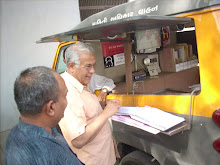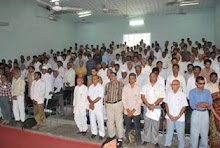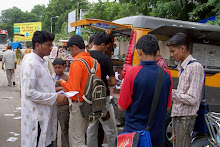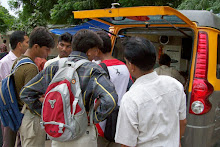Hindustan
Times: Mumbai: Wednesday, 22 July 2015.
More
Mumbaiites are falling ill and dying of diabetes and hypertension, the most
common lifestyle diseases, according to a recent report. In the past two years,
the number of diabetics in the city increased by 19%, while hypertension cases
grew by 8%, according to Praja Foundation, a non-profit working for civic and
health issues.
“Across the
world in urban metros, diabetes and hypertension are in the top five or ten
causes of deaths,” said, Dr Shashank Joshi, endocrinologist, Dr LH Hiranandani
Hospital, Powai, adding pollution and dietary habits has reduced the city’s
average life expectancy. “An average Mumbai resident lives seven years lesser
than people in other parts of the world.”
The report
titled ‘State of Health of Mumbai’ also stated tuberculosis (TB) continued to
remain the top cause of mortality among all the diseases. Of the 90,552 deaths
recorded in the city by the civic body in 2014-15, 7% of the deaths (6,496)
were attributed to TB. The report further said 37,501 people have died of the
bacterial infection in the past five years in Mumbai.
After
tuberculosis, most people died of hypertension, followed by diabetes, according
to the report. In the past five years, 21 people died of TB every day. “The
worrisome part is that most people dying of treatable infectious diseases,
including malaria, dengue and TB are between the age group of 20 and 39 years.
The working population in the productive age of treatable infectious diseases is
not healthy,” said Milind Mhaske, project director, Praja Foundation.
The report by
the foundation, which collects data from the civic body using the Right to
Information (RTI) Act, also looked at incidence of diseases across 24 municipal
wards in the city. It found Andheri (East) (K-east), followed by parts of
Borivli, Kandivli (West) (R-South) and Kurla (L ward) have reported a higher
incidence of diseases such as malaria, dengue, tuberculosis, diabetes,
hypertension and diarrhoea. “Water contamination is one of the major
contributing factors for ill health. Andheri, Kurla and Ghatkopar have reported
the maximum cases of diarrhoea,” said Nitai Mehta, managing trustee of the
foundation. The report found 36.2% of deaths caused by diarrhoea were reported in
children below four years.
Though the
study said the deaths owing to dengue have marginally dropped in the past two
years, cases have increased 633% in the past five years. Last year (2014-15),
10,299 dengue cases were reported at various public and state hospitals. In
2010-2011, the city reported 1,404 dengue cases.
Another
interesting observation was made thanks to a survey, which was part of the
study, conducted by the non-profit to understand the accessibility to
healthcare. It showed 71% of people don’t have medical insurance, but half the
respondents visited private facilities for their health needs, thanks to the
poor health infrastructure at public health facilities. The report found an
average family spends Rs48,321 on health expenses.














































































